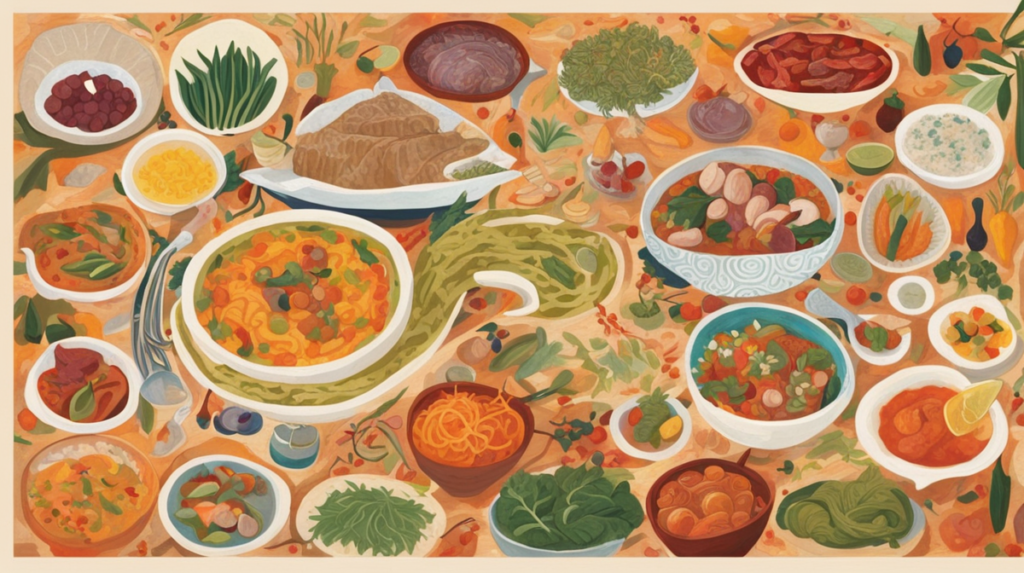
Introduction: Culinary Tourism Through Global Gastronomy
Food connoisseurs worldwide, raise your forks! Get ready to indulge your taste buds and broaden your culinary horizons as we journey through the tapestry of global gastronomy. In this article, we’ll explore the rich array of international food traditions and uncover the health benefits of various cuisines, offering an exciting new perspective on food as a unifying cultural force and potent health enhancer.
A Tour Through Mediterranean Cuisine
First up on our global food tour, let’s bask in the warmth of the Mediterranean sun, known for its heart-healthy diet. Here, olive oil reigns supreme, offering a bounty of antioxidants. The Mediterranean diet features an abundance of fresh fruits, vegetables, whole grains, legumes, and seafood, with moderate amounts of poultry and red wine. Recent studies have linked this diet to a reduced risk of heart disease and other chronic conditions. So, not only does it taste great, but it also does wonders for your health!
Savoring the Flavors of Asia
Moving to the East, Asian cuisines, with their complex flavor curations, offer a wealth of health benefits. Take, for example, the traditional Japanese cuisine. The Japanese diet, high in seafood, fermented foods, green tea, and whole grains, contributes to longevity and lower obesity rates. Similarly, traditional Indian food serves a feast of flavors, with many health benefits, thanks to its use of “super spices” like turmeric, that offer anti-inflammatory and antioxidant effects.
Latin American Cuisine
Latin American cuisine gathers food traditions from Mexico to Argentina, offering tempting flavors combined with health benefits. Beans, avocados, chili peppers, corn, and different types of squash form the base of most dishes, making it high in fiber and low in fat. These cuisines’ heavy reliance on legumes and fruits provides essential nutrients, like potassium and vitamin C.
Controversies and Debates in Global Gastronomy
Despite its undeniable pleasures, global gastronomy isn’t without controversy. The rise of fast-food culture and subsequent dilution of traditional cuisines pose a threat to cultural preservation and public health. However, as we continue exploring different food traditions, the importance of maintaining and celebrating these diverse culinary identities while promoting their inherent health benefits becomes apparent.
Conclusion: Embrace the Diversity
The ultimate takeaway? Food isn’t just necessary for our survival – it’s a flavorful tapestry of cultural identities and health-boosting properties. By exploring global gastronomy, we celebrate diversity, taste delicious delights, and unlock a world of vibrant health benefits. So, let’s honor and embrace these food traditions and indulge in the richness of global cuisine!
Last modified: 18 January 2024


















